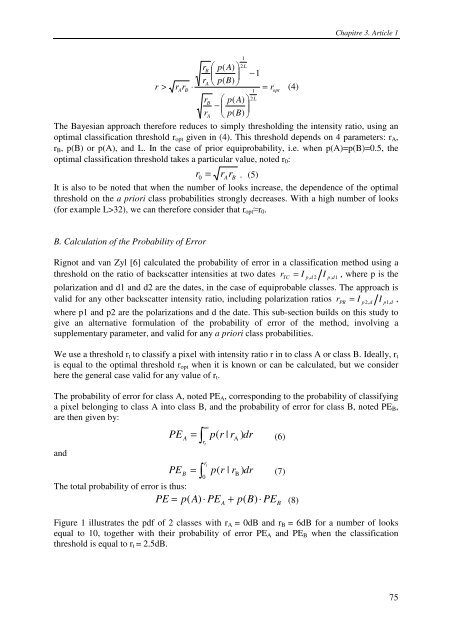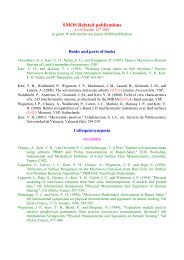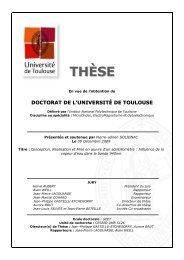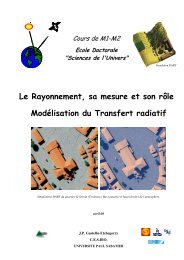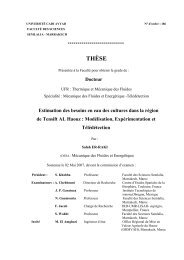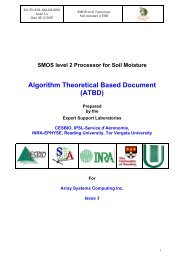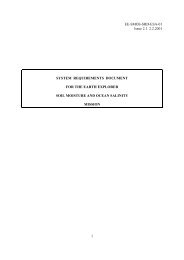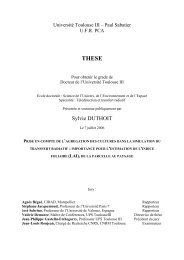THÃS EE - CESBIO - Université Toulouse III - Paul Sabatier
THÃS EE - CESBIO - Université Toulouse III - Paul Sabatier
THÃS EE - CESBIO - Université Toulouse III - Paul Sabatier
Create successful ePaper yourself
Turn your PDF publications into a flip-book with our unique Google optimized e-Paper software.
Chapitre 3. Article 1rrB⎛ p(A)⎞⎜p B⎟⎝ ( ) ⎠2L−1Ar > rArB⋅=1rLB⎛ p(A)⎞ 2−r⎜Ap B⎟⎝ ( ) ⎠The Bayesian approach therefore reduces to simply thresholding the intensity ratio, using anoptimal classification threshold r opt given in (4). This threshold depends on 4 parameters: r A ,r B , p(B) or p(A), and L. In the case of prior equiprobability, i.e. when p(A)=p(B)=0.5, theoptimal classification threshold takes a particular value, noted r 0 :r = r r 0 A B . (5)It is also to be noted that when the number of looks increase, the dependence of the optimalthreshold on the a priori class probabilities strongly decreases. With a high number of looks(for example L>32), we can therefore consider that r opt ≈r 0 .1ropt(4)B. Calculation of the Probability of ErrorRignot and van Zyl [6] calculated the probability of error in a classification method using athreshold on the ratio of backscatter intensities at two dates rTC= Ip, d 2Ip,d1, where p is thepolarization and d1 and d2 are the dates, in the case of equiprobable classes. The approach isvalid for any other backscatter intensity ratio, including polarization ratios = I I ,rPR p2,d p1,dwhere p1 and p2 are the polarizations and d the date. This sub-section builds on this study togive an alternative formulation of the probability of error of the method, involving asupplementary parameter, and valid for any a priori class probabilities.We use a threshold r t to classify a pixel with intensity ratio r in to class A or class B. Ideally, r tis equal to the optimal threshold r opt when it is known or can be calculated, but we considerhere the general case valid for any value of r t .The probability of error for class A, noted PE A , corresponding to the probability of classifyinga pixel belonging to class A into class B, and the probability of error for class B, noted PE B ,are then given by:andPEPEAB∫ ∞= p r | r ) dr∫r tr t(A (6)= p ( r | r ) Bdr (7)0The total probability of error is thus:PE = p( A)⋅ PE + p(B)⋅ (8)APE BFigure 1 illustrates the pdf of 2 classes with r A = 0dB and r B = 6dB for a number of looksequal to 10, together with their probability of error PE A and PE B when the classificationthreshold is equal to r t = 2.5dB.75


